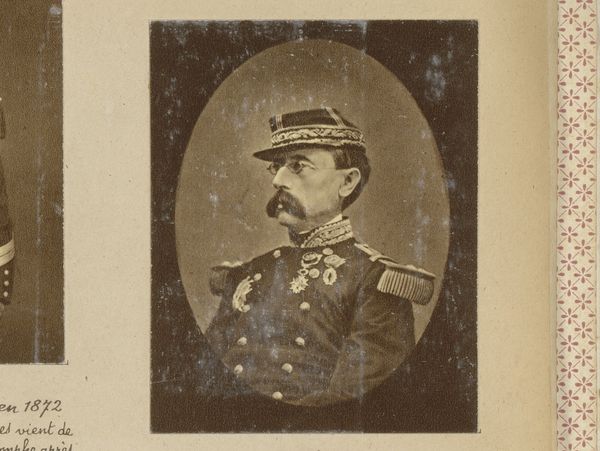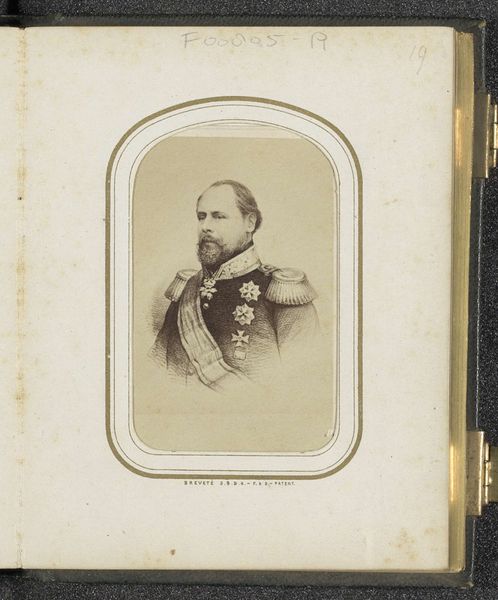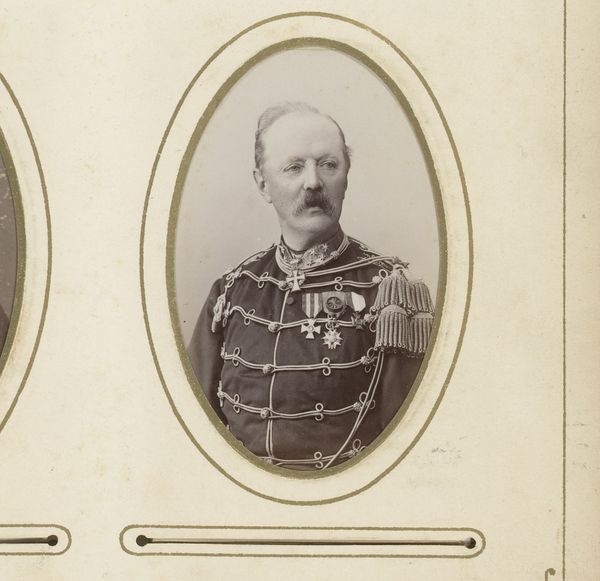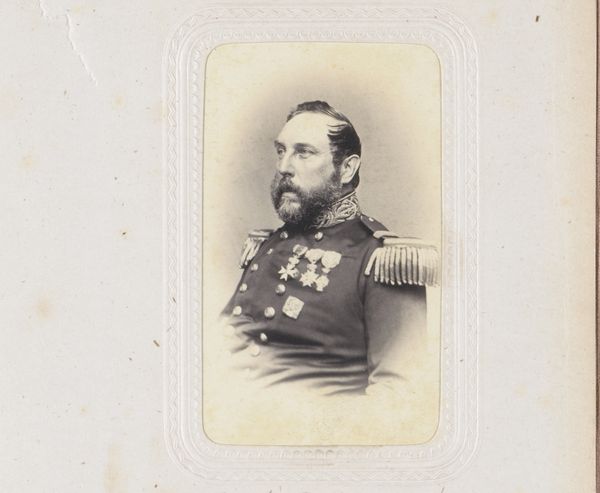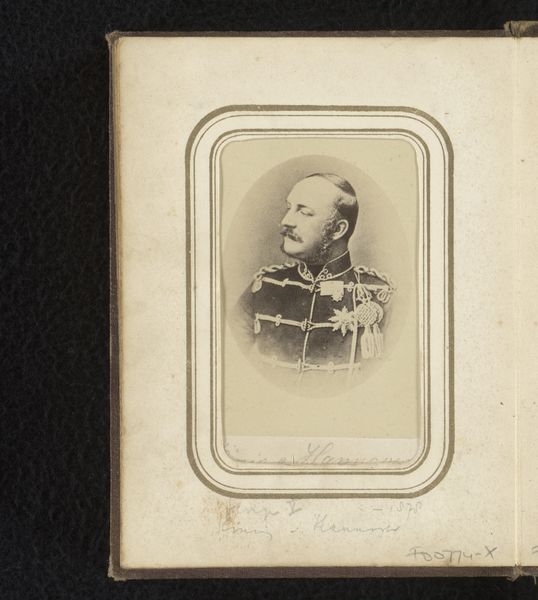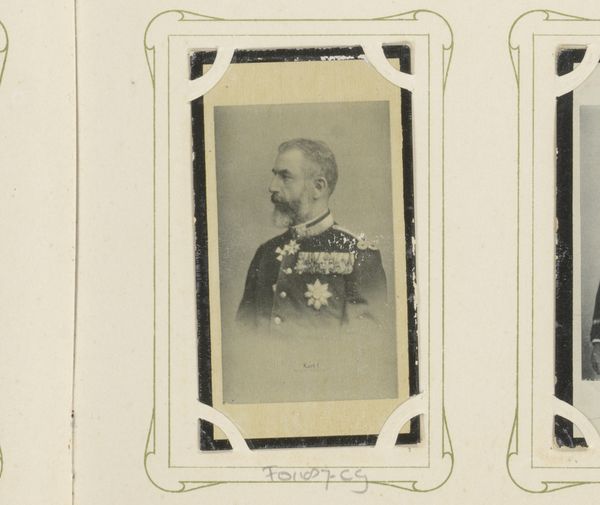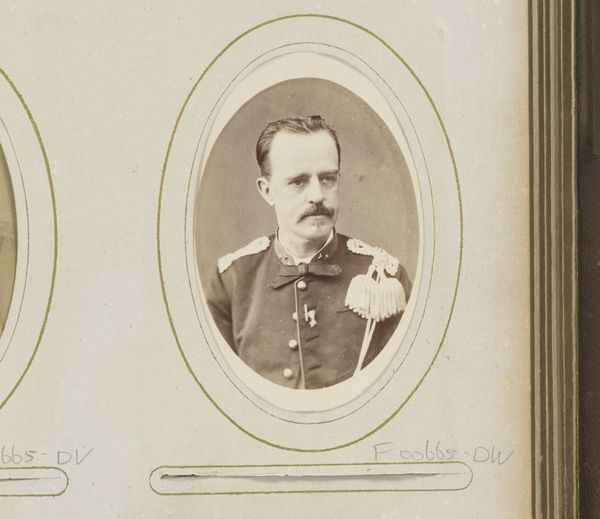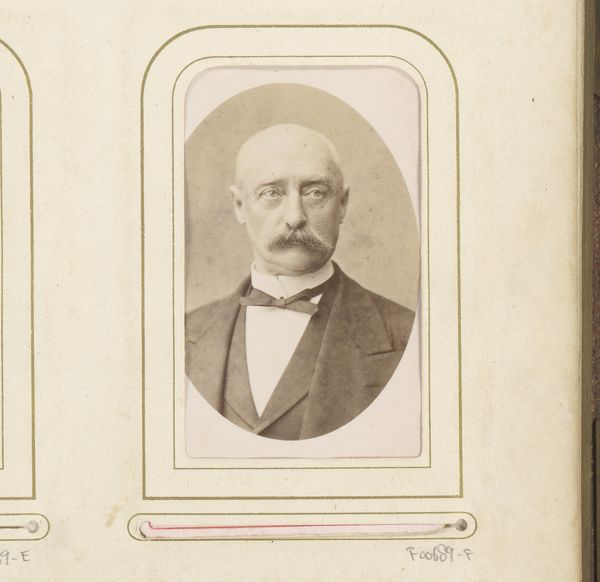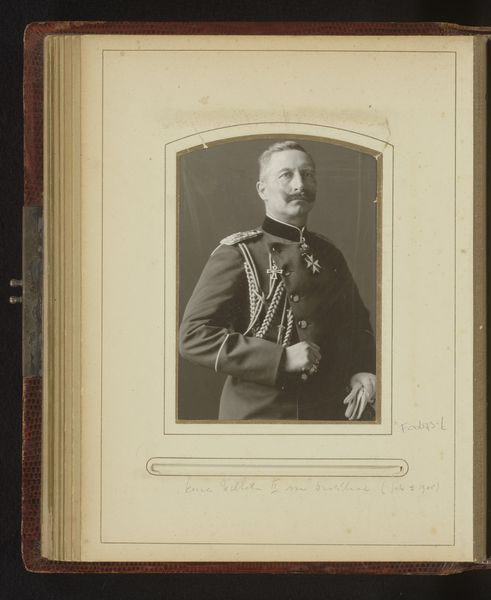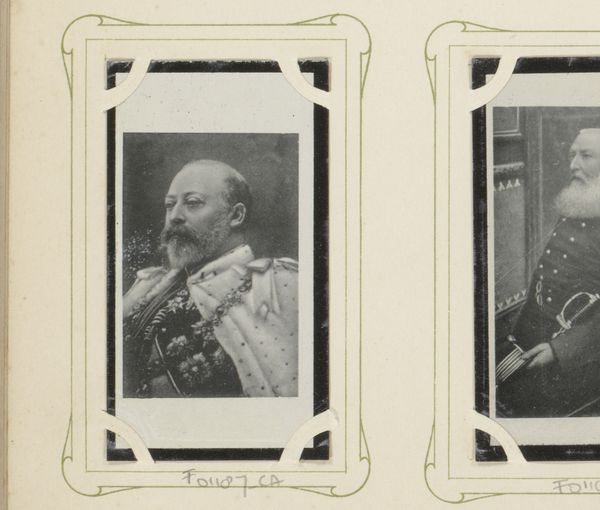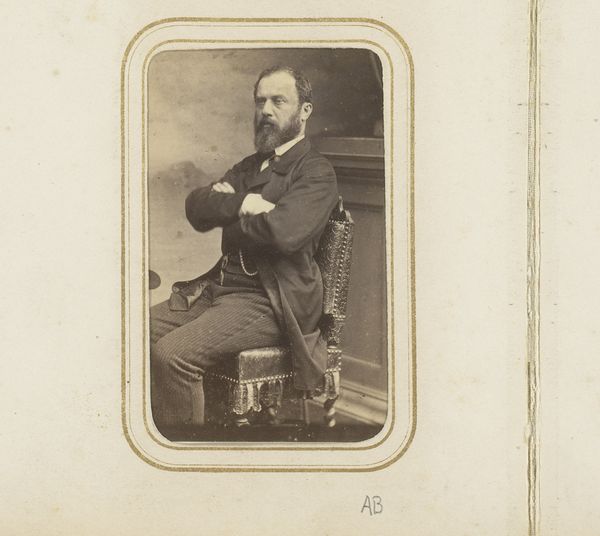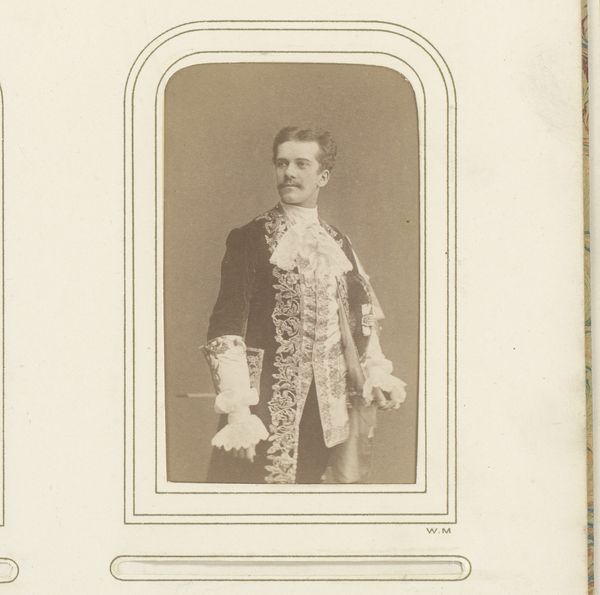
Albert, King of Saxony, from the Rulers, Flags, and Coats of Arms series (N126-1) issued by W. Duke, Sons & Co. 1888
0:00
0:00
drawing, print
#
portrait
#
drawing
# print
#
caricature
#
caricature
#
naive art
Dimensions: Sheet: 2 1/2 × 4 5/16 in. (6.4 × 11 cm)
Copyright: Public Domain
Editor: So, here we have "Albert, King of Saxony," a print from 1888 by W. Duke, Sons & Co. The style feels almost… caricaturistic. The colors are bright, and there's just so much going on with the coat of arms, flag, and even musical instruments. What’s your take on it? Curator: It's fascinating how these trade cards, seemingly innocent advertising, reflect the power dynamics of their time. The visual language, the idealized, almost comical representation of Albert, and the explicit connection to "Honest Long Cut" tobacco normalizes and promotes imperial power. How complicit are we in consuming images that glorify power structures without critically engaging with their implications? Editor: That’s a heavy question. I guess I was just looking at it as a historical artifact. I hadn’t thought about the impact of consuming it now. Curator: Consider how this image, designed to sell tobacco, participates in constructing ideas of nationhood, leadership, and even cultural superiority. The inclusion of musical instruments links Saxony to culture, perhaps implying sophistication, but also obscuring other aspects of the society. Who gets represented and who gets left out? Whose values are promoted and at whose expense? Editor: I see what you mean. It’s not just a portrait; it’s promoting a certain…narrative. The “Musical People” text seems a little… reductive. Curator: Exactly. These cards circulated widely, embedding themselves in the cultural consciousness. Understanding their historical context forces us to confront how such imagery might reinforce existing hierarchies and power imbalances, even today. Do seemingly innocuous images still carry subtle, or not so subtle, political messaging? Editor: This definitely gives me a lot to think about regarding how art functions within a social framework, and how it perpetuates certain views. Thanks for pointing that out! Curator: My pleasure. The point is not to simply dismiss this image but to actively decode it, revealing its complex layers of meaning and understanding its place within a broader cultural landscape.
Comments
No comments
Be the first to comment and join the conversation on the ultimate creative platform.
